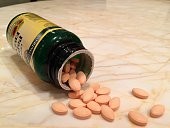Using a beam of neutrons from the heart of a nuclear reactor, a mechanism of enzymes called heme peroxidases and its structure was found by an international research team led by the University of Leicester.
The breakthrough advance was announced in an online publication in Nature Communications. The Leicester team says it was an exciting moment that could change an understanding as to how these enzymes work through "wonderful collaborations" with scientists at European facilities. These include Institut Laue-Langevin (ILL) in Grenoble and FRM-II in Munich, and also the Diamond Light Source in Oxfordshire and the EPR center at Manchester University.
Eurekalert reported that the University of Leicester's Professors Emma Raven and Peter Moody led the team who developed a new method to trap and analyze the enzyme's reaction steps.
"Using beams of neutrons instead of X-rays lets us see the position of hydrogen atoms without altering the chemical state. These enzymes go through two intermediate steps, a couple of years ago we used neutron cryo-crystallography to show the hydrogens in the first step (published in Science), and since then a great deal of work by our team has allowed us find a way to trap the next step. It had been believed that this second step did not hold hydrogen at the reactive center, however, this work clearly shows the hydrogen and so we have to re-think the way the enzyme works." Professor Moody of the Department of Molecular and Cell Biology says.
Heme enzymes carry an iron atom in a special chemical group called a porphyrin which is similar to hemoglobin, a molecule that transfers oxygen in the blood. However, in heme peroxidase enzymes, it is used to bifurcate peroxide for several biochemical processes and these include to get rid of damaged compounds in the cell and to make new molecules that a cell needs.
Phys org reported that billion of years ago, there was no living matter on the planet. Small chemical compounds formed into larger organized structures with a capacity for self-reproduction. It is still unknown as to how the early precursors of life were born. The involvement of molecules and what these are made of is still a puzzle in evolutionary history.


